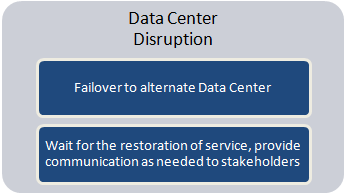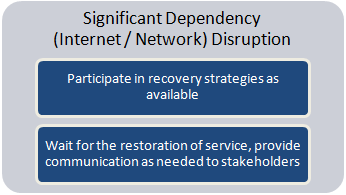L-Soft Disaster Recovery Plan for ListPlex
L-Soft has a disaster recovery plan in the event of a significant disruption to ListPlex. A significant disruption may include a significant disruption for the Internet Service Provider (ISP). The plan outlines the key recovery steps to be performed during and after a disruption so that normal operations can be restored as soon as possible.
Technical recovery will be performed only in the event of a significant disruption. In the event of a disaster, the following customers will be given priority for recovery at the secondary site:
All other hosted customers will be recovered at the secondary site:
- After all customers with dedicated VM have been recovered
- After primary site IP addresses have been relocated to the disaster recovery site
The specific disaster recovery objectives are to:
- Immediately mobilize a core group to assess the technical ramifications of a disruption
- Set technical priorities for the recovery team
- Minimize the impact of the disruption to the impacted features and priority customers (dedicated VM)
- Stage the restoration of operations at the secondary site to full processing capabilities
- Enable rollback operations once the disruption has been resolved
There are significant dependencies between and supporting technical groups within and outside L-Soft. This plan is to coordinate with customers to enable their own recovery. The plan is not intended to outline all the steps or recovery procedures that customers need to take in the event of a disruption, or in the recovery from a disruption.
The overall DR strategy of L-Soft International, Inc. is summarized in the table below. These scenarios and strategies are consistent across the technical layers (user interface, reporting, etc.)
A disaster recovery event can be broken out into three phases, the response, the resumption and the restoration.
Response Phase: The immediate actions following a significant event |
- On call personnel paged
- Decision made around recovery strategy to be taken
- Full recovery team identified
- For a short outage, priority customers are contacted and will decide if they want to recover or wait
|
Resumption Phase: Activities necessary to resume services after team has been notified |
- Recovery procedures implemented
- Coordination with other departments executed as needed
|
Restoration Phase: Tasks taken to restore service to previous levels |
- Rollback procedures implemented
- Operations restored
|
Response Phase
The following are the activities, parties and items necessary for a disaster recovery response in this phase.
Step |
Components |
| Identify issue, page on call/designated responsible individual |
- Issue communicated/escalated
- Priority set
|
| Identify the team members needed for recovery |
Selection of core team members required for restoration phase from among the following groups:
- Operations
- Technical Support
|
| Communicate the specific recovery roles and determine which recovery strategy will be pursued |
- Documentation/tracking of timelines and next decisions
- Estimation of the duration of the primary site outage based on preliminary analysis
- Creation of disaster recovery event command center/"war room" as needed
- Contact priority customers (based on customer's SLA) to decide if customer wants failover to secondary site
|
Resumption Phase
During the resumption phase, the steps taken to enable recovery will vary based on the type and duration of the issue. If decision is made to monitor primary site recovery only, then the disaster recovery team will:
- Track progress of primary site recovery
- Recalculate estimated completion based on current progress
- Send periodic updates to core stakeholders
Otherwise, the disaster recovery team will execute the following steps:
Step |
Components |
Initiate Failover |
- Restoration procedures identified
- Risks assessed for each procedure
- Coordination points between groups defined
- Issue communication process and triage efforts established
|
Complete Recovery |
- Recovery executed, including handoffs between key dependencies
|
Test Recovery |
- Tests assigned and performed
- Results summarized and communicated to group
|
Failover deemed successful |
- Communication sent to priority stakeholders
- New Bethesda IP address identified
- Customer asked to change its DNS
|
Restoration Phase
During the restoration phase, the disaster recovery team will execute the following steps:
Step |
Components |
| Determine when failback to original data center will be pursued |
- Restoration procedures determined
|
| Original data center restored |
|
| Complete Failback |
- Failback steps executed, including handoffs between key dependencies
|
| Test Failback |
- Tests assigned and performed
- Results summarized and communicated to group
- Issues (if any) communicated to group
|
| Determine whether failback was successful |
- Declaration of successful failback and communication to priority stakeholders to restore original DNS entries
- Message on lsoft.com for restored operations
- Results summarized, post mortem performed and disaster recovery plan updated (as needed)
|
LISTSERV is a registered trademark licensed to L-Soft international, Inc.
See Guidelines for Proper Usage of the LISTSERV Trademark for more details.
All other trademarks, both marked and unmarked, are the property of their respective owners.






